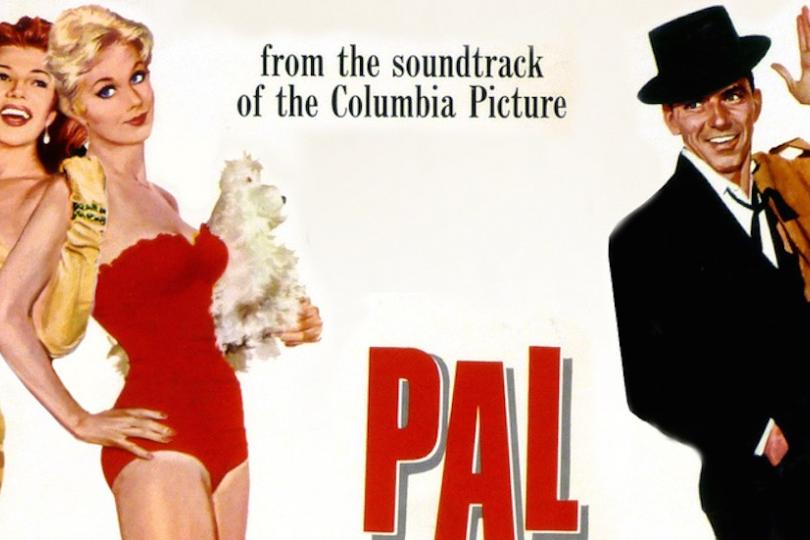Reviving old musicals: Rodgers and Hart

If anyone is responsible for transforming the musical theater of the 20th Century, without question, it’s Richard Rodgers. Partnered first with Lorenz Hart and then with Oscar Hammerstein II, Rodgers created standards for innovative theater that never fail to thrill new generations of audiences. This article will focus on five of Rodgers and Hart’s shows, all of which have had professional theater revivals, and should be considered by local theaters for production.
While Rodgers’ experiences with his first collaborator were precarious, their contributions to the theater are often unsurpassed. A genius with lyrics, Hart was an alcoholic and tormented by his inablity to accept his own homosexuality.
Based on Mark Twain’s novel, A Connecticut Yankee was first produced in the late 1920s. The main characters, Martin, is knocked unconscious when Fay, his fiancée, learns he’s spending time with his old flame, Alice. He dreams he’s back in the court of King Arthur and falls in love with Demoiselle Alisande, but the plot thickens after Arthur’s half-sister, Morgan le Fay, kidnaps her.
A Connecticut Yankee has great roles for women. While Alice sings the charming standard, “Thou Swell,” in which she dreams of domestic bliss, Morgan Le Fay has the musical’s genuine showstopper “To Keep My Love Alive,” which documents her many relationships. In 1943, following the success of Oklahoma, Hart’s health was in decline, so, hoping to give his collaborator’s life a boost, Rodgers recommended that they update the libretto. Martin becomes a wounded soldier and several new songs are added.
There are two film versions of the story. The first, nonmusical version, starring Will Rogers is the better of the two. A musical starring Bing Crosby uses none of the Rodgers and Hart score.
There are a number of good reasons why A Connecticut Yankee is ready to be rediscovered. In addition to its delightful score and good character roles, it’s an opportunity for a theater to reuse those sets and costumes from either Camelot or Once Upon a Mattress.
Let’s put on a show
With songs that have become standards, such as “Where or When,” “My Funny Valentine,” “The Lady is a Tramp,” “ Johnny One-Note” and “I Wish I Were in Love Again,” Babes in Arms (1937) is the ultimate lets-put-on-a-show musical. It’s also, probably, Rodgers and Hart’s most famous title.
The original show, with a script by Rodgers and Hart, music by Rodgers and Lyrics by Hart, follows a group of teenagers who don’t want to live on a work farm while their parents are doing summer stock in hope of reviving vaudeville. The original libretto included things that are, by todays’ standards, considered politically charged, dealing with racism and communism. Some of this is in evidence in the 1939 MGM film version starring Mickey Rooney and Judy Garland.
The script was altered in 1959 to eliminate the political elements, and this version was the only version that could be licensed for almost four decades. Before his tenure as Artistic Director at the Guthrie ended, Garland Wright staged the show, and it was one of the first musicals featured by Encores!, a New York City Center program that stages concert versions of classic musicals. Plenty of recordings of this musical are available, and any theater should be able to attract an ensemble of talented younger performers to perform this magnificent show. Even if it’s just a rental of the movie, take a look at Babes in Arms, which if only for that score alone, is a pleasure to behold.
Based on Shakespeare’s Comedy of Errors, the 1938 The Boys from Syracuse is another treasure. Adapted from a comedy of Plautus (whose work also inspired Sondheim’s A Funny Thing Happened on the Way to the Forum), this is a Roman comedy of mixed identities. Identical twins Antipholus of Ephesus and Antipholus of Syracuse were separated as children. Their servants, both named Dormio, suffered the same fate.
Of course, when the wives and servants mix up the twins, silliness abounds. George Abbott directed the original production, with choreography by George Balanchine. The score includes such standards as “Falling in Love with Love” (used in the Whitney Houston TV production of Cinderella), “This Can’t Be Love,” and “Sing For Your Supper.” The Boys from Syracuse is an ideal musical comedy, and also terrific opportunity to use those leftover sets from Forum.
Stay on your toes
First produced in 1936, Rodgers and Hart once again teamed with George Abbot to create On Your Toes. Originally intended as a movie script for Fred Astaire, Ray Bolger, the rubber-legged dancer who starred as the Scarecrow in The Wizard of Oz, took the leading role of Phil “Junior” Dolan III, who teaches music at Knickerbocker University. He asks the director of the Russian Ballet to stage a jazz ballet, and after one obstacle after another, in order for the show to go on, Junior must assume the male lead. That ballet is one of Rodgers’ finest compositions, “Slaughter on Tenth Avenue.”
Rodgers loved to challenge audiences and he did this with On Your Toes by mixing both jazz and classical music for the score. Of course, this isn’t an easy show to produce because it’s so dance heavy.
On Your Toes marked the first time a musical made dramatic use of classical dance and also used jazz in its score. With choreography by the great Balanchine, the innovative score includes “It’s Got to be Love,” “There’s a Small Hotel”, “Quiet Night” and “Glad to Be Unhappy.” The 1952 revival, which starred Balanchine’s wife, Vera Zorina, MGM contract player Bobby Van and American Theater legend, Elaine Stritch. It’s cast recording is one of the best examples of the score available. With the right ensemble, it could be an A-one addition to the theater climate of the Twin Cities.
Together Rodger and Hart would write a total of 34 stage and screen musicals together, and MGM would dramatize their career in the 1948 all-star production, Words and Music. In it, the ineffectual Tom Drake would play Rodgers while Mickey Rooney was given the showier role of Hart. In this film, the reasons presented for Hart’s destructive personality steamed from physical troubles to the lost love of a woman. Still, Rooney gives his all in this fictional biography, which is also the last film Rooney made with his beloved co-star, Judy Garland.
The Masterpiece
If one musical can be called their masterpiece, it is Pal Joey. Adapted for the stage from the John O’Hara novel, like The Boys from Syracuse, the show benefitted greatly from the input of George Abbott and for the first time in musical theater, featured a leading character who isn’t a particularly nice man.
Joey Evans is a nightclub performer hoping for his big break in 1930s Chicago. One evening he meets Linda English, a shop girl, looking at puppies in a pet store window. He romances her, but keeps her dangling when he starts romancing Vera Simpson, a wealthy older woman he’s hoping will bankroll his dreams of opening his own nightclub. Underworld corruption and tactics to blackmail Vera backfire. Finally, Joey is required to take charge of his life.
The Rodgers and Hart score is glorious, featuring such tunes as “I Could Write a Book,” “In Our Little Den of Iniquity” and the classic “Bewitched, Bothered and Bewildered.” However, the original production was not a success, playing less than a year. Before heading to MGM the next year with his friend Stanley Donan, Gene Kelly played the title role.
A decade later, Pal Joey was given a superb revival, featuring Harold Lang with Vivienne Segal repeating her performance as Vera Simpson. In the featured role of reporter Melba Snyder, Elaine Stritch sang the marvelously naughty “Zip.” (Fasincating trivia: She played this role while also covering for Ethel Merman in Call Me Madam.)
Pal Joey is a smart adult musical and should be in the repertoire of every musical theater. For some reason, however, those involved in productions haven’t necessarily trusted the material. A 1957 film version, for example, moves the set to modern San Francisco, and, while this doesn’t hurt the material, it somehow seems wrong. The script combined characters and only maintained eight songs from the score. Frank Sinatra was perfectly cast as Joey, with Rita Hayworth as Vera and Kim Novak as Linda English. This latter role was turned into a showgirl to accommodate some of the songs. Of course the movie gives the story a happy ending, a movie musical staple.
Pal Joey had its latest Broadway revival in 2008 at Studio 54. For this production, Richard Greenberg revised the libretto, adding an unnecessary subplot and extra songs from Rodgers and Hart’s trunk. The role of Linda English was rendered thankless in order to favor Stockard Channing as Vera but Channing’s singing voice lacks any legato. A young man named Matthew Risch stepped into the title role during previews, but he was too young for the role. Joey Evans has to be at least 40 and have some mileage on him. Joe Mantello’s staging was efficient, but missing some of the story’s trappings. The scene in front of the pet store, where Joey romances Linda with “I Could Write a Book,” was moved to a café, and didn’t have the same feeling as the original.
It’s time give audience's an opportunity to see some of these under-performed classics of Broadway past, and Rodgers and Hart’s work should be at the forefront of any season of revivals.




